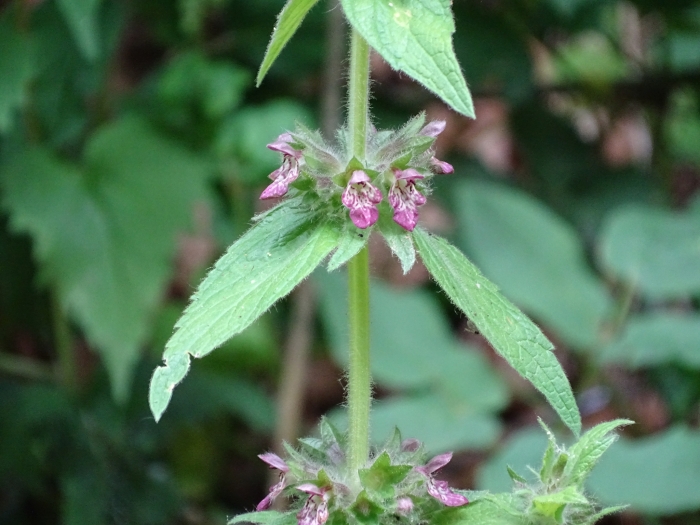Limestone Woundwort
(Stachys alpina)
Limestone Woundwort (Stachys alpina)
/
/

Christian Berg
CC BY 4.0
Image By:
Christian Berg
Recorded By:
Copyright:
CC BY 4.0
Copyright Notice:
Photo by: Christian Berg | License Type: CC BY 4.0 | License URL: http://creativecommons.org/licenses/by/4.0/ | Rights Holder: Christian Berg | Publisher: iNaturalist | Date Created: 2020-05-31T10:24:13-07:00 |










































Estimated Native Range
Summary
Stachys alpina, commonly known as Limestone Woundwort, is a perennial herb that is semi-evergreen to semi-deciduous, depending on the climate. It is native to limestone-rich soils in open woodlands and forest clearings of Europe and Western Asia. This plant typically grows to a height and width of 2-3 feet (0.6-0.9 meters), forming clumps of upright, hairy stems. The leaves are heart-shaped with a textured surface, and the plant produces spikes of hooded, purple flowers in late spring to early summer, which are attractive to pollinators such as bees.
Limestone Woundwort is valued for its medicinal properties, traditionally used to treat wounds and inflammation. In gardens, it is often used in herbaceous borders, cottage gardens, or as a ground cover due to its spreading habit. It thrives in full sun to part shade and prefers well-drained soils with a neutral to alkaline pH. While it is drought-tolerant once established, it benefits from regular watering during prolonged dry periods. It is generally low-maintenance but can be susceptible to powdery mildew in humid conditions. Deadheading spent flowers can encourage a second bloom and prevent self-seeding, as it can become somewhat invasive if left unchecked.CC BY-SA 4.0
Limestone Woundwort is valued for its medicinal properties, traditionally used to treat wounds and inflammation. In gardens, it is often used in herbaceous borders, cottage gardens, or as a ground cover due to its spreading habit. It thrives in full sun to part shade and prefers well-drained soils with a neutral to alkaline pH. While it is drought-tolerant once established, it benefits from regular watering during prolonged dry periods. It is generally low-maintenance but can be susceptible to powdery mildew in humid conditions. Deadheading spent flowers can encourage a second bloom and prevent self-seeding, as it can become somewhat invasive if left unchecked.CC BY-SA 4.0
Plant Description
- Plant Type: Herb
- Height: 2-3 feet
- Width: 2-3 feet
- Growth Rate: Moderate
- Flower Color: Purple
- Flowering Season: Spring, Summer
- Leaf Retention: Evergreen, Semi-Deciduous
Growth Requirements
- Sun: Full Sun, Part Shade
- Water: Medium
- Drainage: Medium
Common Uses
Bank Stabilization, Bee Garden, Bird Garden, Butterfly Garden, Deer Resistant, Hummingbird Garden, Low Maintenance, Rabbit Resistant
Natural Habitat
native to limestone-rich soils in open woodlands and forest clearings of Europe and Western Asia
Other Names
Common Names: Alpen-Ziest, Alpenandoorn
Scientific Names: , Stachys alpina, Betonica masandariana, Stachys dinarica, Stachys masandariana,
GBIF Accepted Name: Stachys alpina L.